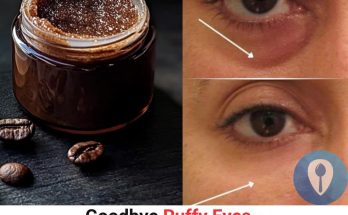Stroke is a life-threatening condition that can occur suddenly and without warning. Many people unknowingly engage in daily habits that significantly increase their risk. Here are nine common bad habits that could lead to a stroke:
1. Staying Up Late
Late-night habits disrupt the body’s biological clock, affecting heart and brain vascular function. Sleep deprivation increases the production of adrenaline and norepinephrine, causing blood vessels to constrict and reducing blood flow, leading to a higher risk of stroke.
2. Chronic Fatigue and Stress
Both physical exhaustion and excessive mental stress can contribute to cardiovascular and cerebrovascular diseases. In today’s fast-paced society, constant work pressure and life challenges generate negative energy, leading to stress accumulation. Once stress reaches a critical level, the likelihood of a stroke increases.
3. Emotional Overload
According to Dr. Song Enfeng from Wuhan University People’s Hospital, extreme emotions like anger can trigger the sympathetic nervous system, raising blood pressure and heart rate. This adds excessive strain on the heart and brain, increasing the risk of sudden strokes.
4. Not Drinking Enough Water
Dehydration thickens the blood, making it more prone to clotting and blocking blood vessels. This is especially dangerous during hot weather when excessive sweating leads to significant fluid loss. To prevent this, keep a glass of water near your bed and drink small sips before sleeping and after waking up.
5. High-Sodium Diet
Excessive salt consumption is a major contributor to high blood pressure, a leading cause of stroke. Additionally, diets high in sugar and fat can damage blood vessels. It is advisable to limit the intake of fatty meats, organ meats, and foods rich in cholesterol such as egg yolks and fish roe.
6. Smoking
Smoking increases the risk of ischemic stroke by up to 90% and nearly doubles the risk of subarachnoid hemorrhage. The harmful chemicals in cigarettes cause blood vessels to narrow and thicken, making it harder for blood to circulate properly.
7. Excessive Alcohol Consumption
Studies show that heavy drinkers have a 22% higher risk of stroke compared to non-drinkers or occasional drinkers. The safest way to reduce stroke risk is to avoid excessive alcohol consumption.
8. Prolonged Sitting and Lack of Exercise
Sedentary lifestyles contribute to obesity, poor blood circulation, and increased risk of cardiovascular diseases. To maintain a healthy lifestyle, start exercising gradually with moderate intensity. However, sudden high-intensity workouts can shock the body, leading to acute oxygen deprivation and blood supply issues, potentially triggering a stroke.
9. Abdominal Obesity
Excess belly fat is linked to numerous health risks, including cardiovascular diseases and even cancer. Experts recommend keeping waist measurements below 90 cm for men and 85 cm for women to lower the risk of stroke and other health complications.
Recognizing Stroke Symptoms with the “BE FAST” Rule
- B (Balance): Sudden loss of balance, dizziness, severe headache, or lack of coordination.
- E (Eyesight): Blurred or lost vision in one or both eyes.
- F (Face): Facial drooping, asymmetry, or a distorted smile.
- A (Arm): Difficulty moving or lifting one arm, weakness, or numbness on one side of the body.
- S (Speech): Slurred speech, difficulty speaking, or incoherent words.
- T (Time): If any of these symptoms appear suddenly, call emergency services (911) immediately for urgent medical attention.
Conclusion Stroke is a serious and life-threatening condition, but it is largely preventable by adopting healthier habits. Avoiding these nine harmful habits, staying hydrated, maintaining a balanced diet, exercising regularly, and managing stress effectively can significantly reduce the risk of stroke. Early recognition and prompt medical intervention are key to improving stroke outcomes.



